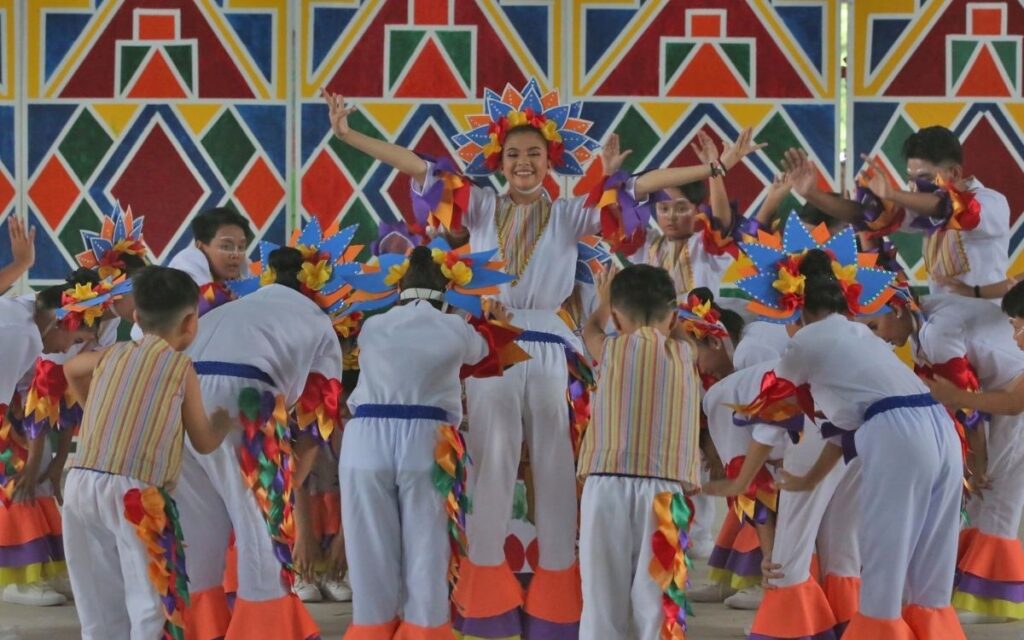The Pahiyas Festival is a vibrant feast celebrated annually in Lucban, Quezon, Philippines. It honors San Isidro Labrador, the patron saint of farmers, every May 15th.
Celebrated with profound enthusiasm and cultural pride, the festival transforms the quaint town of Lucban into a canvas of colors. Locals adorn their homes with flamboyant decorations made from agricultural harvests, particularly the ‘kiping,’ a rice wafer shaped into leaves and dyed in a multitude of hues.
These embellishments not just showcase the town’s bountiful yields but also reflect the deep-seated gratitude of the community towards a fruitful harvest season. The streets come alive with parades, music, and dance, drawing in visitors from around the globe. As a blend of faith, tradition, and thanksgiving, Pahiyas has become a must-see event, offering a peek into the rich tapestry of Philippine festivals and a testament to the agricultural heritage of the region.
Pahiyas Festival Place Of Origin And History
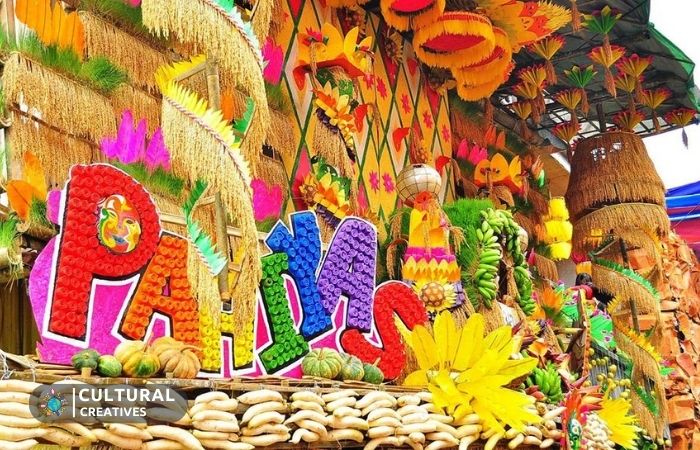
One of the Philippines’ most cherished celebrations, renowned for its unique blend of religious reverence, cultural richness, and agricultural thanksgiving. The festival transforms the quaint town of Lucban into a mesmerizing tapestry of decorated houses and streets, captivating locals and visitors alike with its extraordinary display of creativity and community spirit.
It has its roots deeply embedded in a centuries-old tradition of paying tribute to San Isidro Labrador, the patron saint of farmers. Dating back to the Spanish colonial period, the foundations of the festival are set against the backdrop of bountiful harvests and agricultural success, celebrated by the farming communities as a way to show their gratitude and seek continuous blessings.
Significance And Cultural Importance
Integral to the Philippine cultural identity, the festival represents more than just mirth and merriment; it signifies the culmination of hard work and the unity exemplified by the Lucbanin people. Participating households go to great lengths to adorn their homes with “kiping”, multicolored rice wafers, and an array of farm produce, reflecting a rich mosaic of creativity, ingenuity, and devotion. This practice not only honors the patron saint but also preserves and promotes the agricultural heritage that is the town’s lifeblood.
Pahiyas Festival Dates And Location
The festival is an annual spectacle taking place every 15th of May in the Lucban municipality, located in the province of Quezon. Marked by a period of dynamic festivities, the town springs to life as thousands flock to participate in one of the country’s most picturesque traditions. The convergence of cultural events, local delicacies, and agricultural displays creates an unforgettable experience for those journeying to partake in the festivities.
The Visual Splendor Of Pahiyas
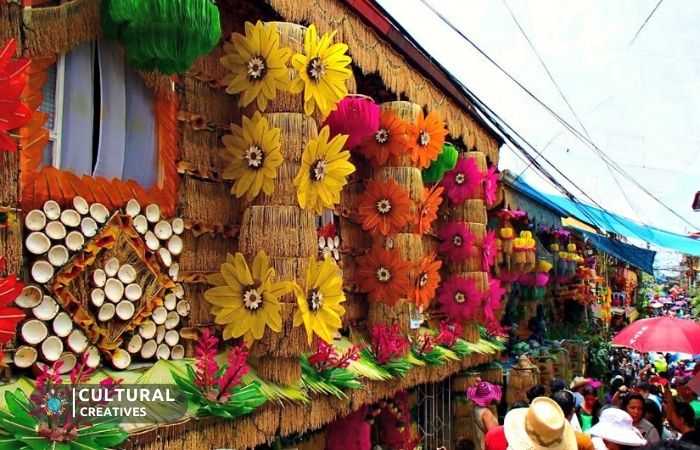
One of the Philippines’ most treasured and picturesque celebrations, turns the quaint town of Lucban into a breathtaking canvas. As we journey through the streets, every corner bursts with artistry, each piece telling a story of thanksgiving and communal spirit.
Kiping: The Colorful Star Of Pahiyas
A traditional Filipino decoration that captivates the eyes with its luminous palette. These leaf-shaped wafers, crafted from rice dough, form magnificent tapestries. See how locals skillfully arrange them into chandeliers or ‘arangya’, transforming their homes into stunning exhibits of folk art.
House Decorations And Street Art
Exploring the town during Pahiyas unveils a delightful competition among homeowners. They adorn their facades with not just kiping but also with fruits, vegetables, and handcrafted ornaments. Art installations celebrate agricultural prosperity, while vibrant murals narrate stories of harvest and heritage.
Parade Of Colors costume: Processions And Floats
The heart of the festival pulses with its processions and floats. Witness the parade as it winds through the streets; elaborate floats bedecked with bountiful produce, native crafts, and kiping masterpieces. Performers in dazzling traditional costumes dance to folk music, each step symbolizing the town’s dynamic culture.
Nighttime Illumination: A Blaze Of Color
As day turns to night, Pahiyas doesn’t sleep. Instead, it glows. Homes and street art pieces burst into life with strategic lighting, casting a warm glow over the intricate designs. The night sky becomes the canvas, and the town, lit by a myriad of lights, presents an unforgettable scene that both locals and visitors carry long after the festival ends.
Experiencing The Festival
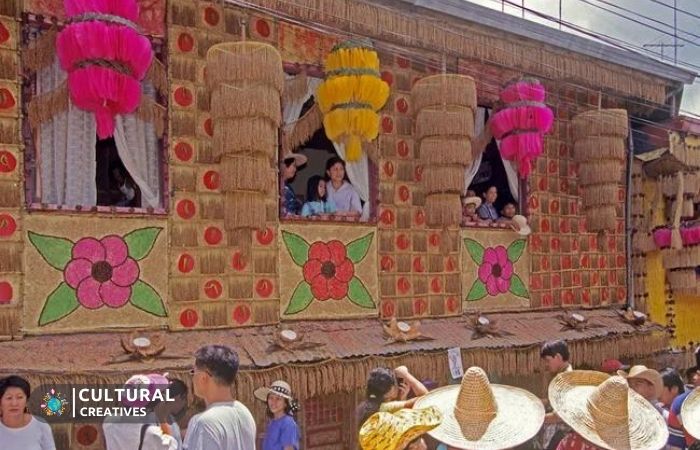
If you’re looking to immerse yourself in a vibrant cultural celebration, the Pahiyas Festival in the Philippines is an event that should top your list. This lively festivity honors the patron saint of farmers, San Isidro Labrador, and showcases a dazzling array of colors, tastes, and sounds. It transforms the streets of Lucban into a spectacular visual feast that combines religious tradition, local craftsmanship, and communal spirit.
Planning Your Visit: Tips And Recommendations
- Book accommodations early – Hotels fill up quickly, so secure your stay well in advance.
- Arrive early – Aim to get to the festival at dawn to beat the crowds and see the decorations in the best light.
- Wear comfortable clothing – Choose breathable fabrics and comfy shoes as you’ll be walking a lot.
- Stay hydrated – Keep a water bottle handy during your explorations.
- Know the schedule – Check the official festival program to ensure you don’t miss any highlight events.
Local Delicacies And Culinary Highlights
Partaking in the flavorful feast the festival offers is a must. Lucban is famous for its flavorful longganisa, a local sausage with garlic and spices. Sample the savory Pancit Habhab, enjoyed straight from a banana leaf – no utensils required! Don’t miss out on trying Kalamay, a sticky sweet treat that’s perfect as a snack or dessert.
Music And Dance: The Rhythmic Backdrop
The Pahiyas Festival dances to the beat of spirited music and spectacular performances. Bands, drummers, and street performers fill the air with dynamic sounds. Traditional Filipino dances showcase the talent and grace of local performers, bringing the festive atmosphere to its peak.
Interactive Activities And Contests
Visitors can engage in various interactive experiences. Join the baye-baye (rice-pounding) contest or try your hand at making your own colorful kiping, a decorative piece made from rice dough. Watch artisans at work or dive into decorating contests that add excitement and a taste of friendly competition to the festivity.
Souvenirs And Local Crafts: Taking The Festival Home
A memento from the festival allows you to take a piece of the experience home. Wander through stalls selling hand-woven hats, bags, and native dolls. Consider purchasing vibrant kiping as wall decor or nabasaging (cracked) pottery, a unique artistic expression from the locals. These keepsakes ensure the spirit of Pahiyas continues beyond the festival streets.
The Festival’s Impact And Legacy
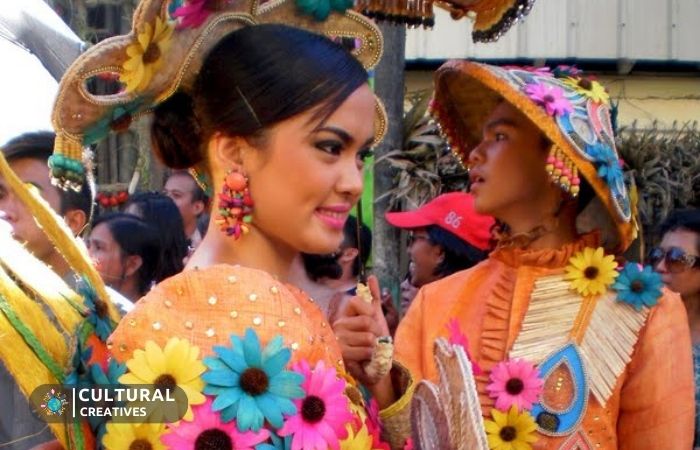
This festival is not just a spectacle of colors and flavors; it is a celebration deeply woven into the fabric of Philippine heritage. This vibrant festival honors San Isidro Labrador, the patron saint of farmers, and transcends a mere annual tradition. It has an enduring impact on the community’s economy, the preservation of culture, the allure to tourists, and necessitates a balance with environmental sustainability. Let us delve into the facets of its influence.
Economic Benefits To The Local Community
The Pahiyas Festival is a catalyst for local economic activity. It generates income and employment opportunities for residents, particularly in the following areas:
- Agriculture: Farmers showcase and sell an abundance of fresh produce.
- Trade: Pop-up markets offer traditional crafts and souvenirs.
- Food Industry: Vendors serve up local cuisine to festival-goers.
- Accommodation: Home stays and hotels experience a surge in occupancy.
The inflow of festival attendees positively impacts businesses across sectors, fostering a thriving community economy.
Cultural Preservation And Promotion
Pahiyas Festival is a shining beacon of cultural identity. It provides a platform to:
- Maintain folk traditions alive through music, dance, and rituals.
- Pass on time-honored skills, like kite-making and lucban hat weaving, to new generations.
- Promote regional arts, including the iconic decoration of Kiping, a rice paste wafer, fashioned into vibrant shapes.
Through these expressions, the festival fortifies community pride and preserves its unique cultural footprint for posterity.
More Festivals:
- Dinamulag Mango Festival
- Pamaypay Festival A Whirlwind of Filipino Culture!
- Bangus Festival Delight
- Bambanti Festival in Isabela
Pahiyas Festival In Philippine Tourism
This is a magnet for tourism, enticing visitors both local and international with its visual splendor and cultural depth. Key highlights include:
- Experiencing the joyous street parades.
- Witnessing homes adorned with agricultural produce and Kiping.
- Tasting the region’s gastronomic offerings.
This festival is a linchpin in the Philippine tourism calendar, positioning the country as a diverse cultural destination in the Southeast Asian region.
Environmental Concerns And Sustainable Practices
As the festival draws crowds, it also raises environmental concerns. To address these, the community has implemented sustainable practices such as:
- Encouraging the use of biodegradable materials for decorations.
- Promoting proper waste disposal and recycling during the festivities.
- Incentivizing households to find innovative, eco-friendly ways to present their harvests.
Sustainability efforts ensure that the Pahiyas Festival’s legacy lives on not only through cultural celebration but also through conscious environmental stewardship.
Conclusion
Celebrating the Pahiyas Festival offers a unique glimpse into Philippine culture. It’s a blend of faith, artistry, and communal joy. Visitors leave enriched by Lucban’s vibrant hues and heartfelt traditions. Embrace the fiesta spirit and plan your visit to this feast for the senses.
Lucban awaits with open arms and festive streets.

